Verdict
This light and compact dongle hangs off your backpack and keeps you in contact with the world while you’re off hiking, kayaking or generally exploring in parts of the world not covered by normal mobile phone service. Using satellites, it allows you to send and receive text messages, call emergency services, and send GPS coordinates. It’s a bit of a specialist tool, and won’t appeal to everyone, but for those who do need it, the Defy could be a lifesaver.
Pros
- Good connectivity
- Lightweight
- Water resistant
Cons
- Specialised
- Initial setup was tricky
Introduction
Satellite-based communications that work even when you’re out of cell tower range could be the next big thing in smartphones.
The iPhone 14 gained the capability to send SOS signals this way, and The Cat S75 rugged Android phone can do it too. Now, Motorola has released the Defy, a USB-C dongle that adds the functionality – useful if you’re heading off the beaten track – to just about any phone.
Design and build
- Tough
- Lightweight
- Easy to carry
It’s not much to look at, but then this is a device made to be used rather than admired.
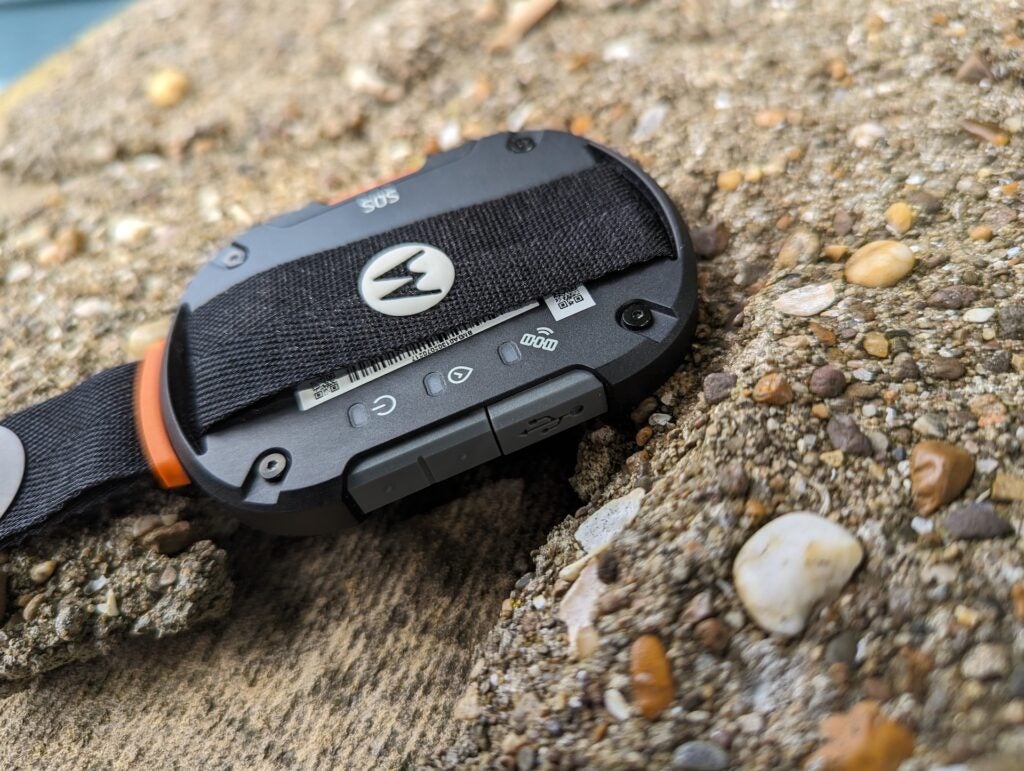
It’s made from chunky black plastic with orange accents and grey covers over its USB-C charging port and other buttons, and has a wraparound strap that ends in a metal loop that can be attached to a carabiner or otherwise hung on your backpack or belt.
Satellite communications depend on a clear view of the sky, so it’s good to see the design take this into account – it’s not something you’ll want to put in your pocket or zip into a bag.
There are three LEDs on the top of the Defy, one for power, one for GPS, and one for a messaging satellite connection. Most of the time they’re off unless they’re trying to tell you something, though the power light pulses to tell you it’s switched on.
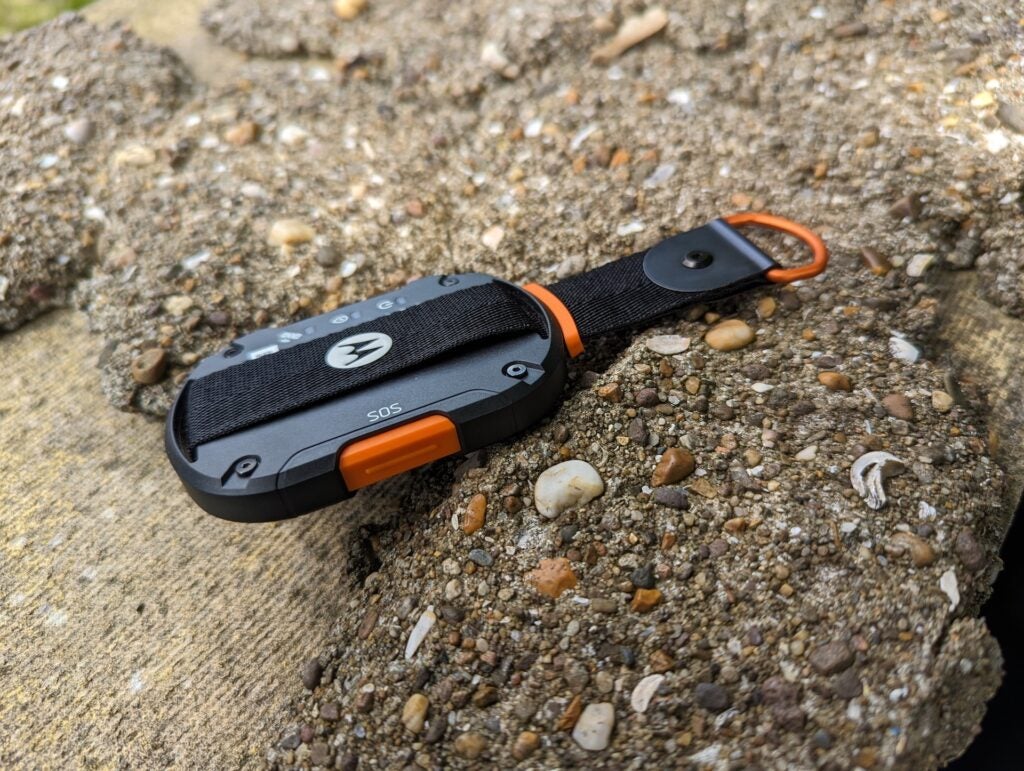
On the other side, there’s an orange SOS button for emergencies, with a line of braille underneath it identifying its use for the visually impaired, and the matching letters ‘SOS’ on the other.
Not especially small but nice and light, the Defy is IP68 rated for dust and waterproofing so it won’t object too much to being caught in the rain. It’s also drop-resistant, so if it parts company with your pack strap, it shouldn’t matter too much.
Features and performance
- Good satellite connectivity
- App works well
- Tricky to set up
The Defy pairs with your smartphone via Bluetooth, interfacing with the Bullitt Satellite Messenger app also used on the Cat S75, and available for phones running version 10 of Android or later, or iOS 14 or later.
You’ll need to create an account and activate a service plan before you can start sending satellite messages, though the Defy comes with one year of ‘essential’ coverage which grants you up to 30 messages per month and will cost £4.99/$4.99 per month once the bundled year has run out.
I had trouble signing up for the service, with a phone number and password that worked on the phone browser refusing to let me in when I typed into the app or a PC browser window. Eventually, after constant error messages saying the credentials I’d just set up and verified through an SMS code were invalid, and having gone through at least one password reset, I got logged in.
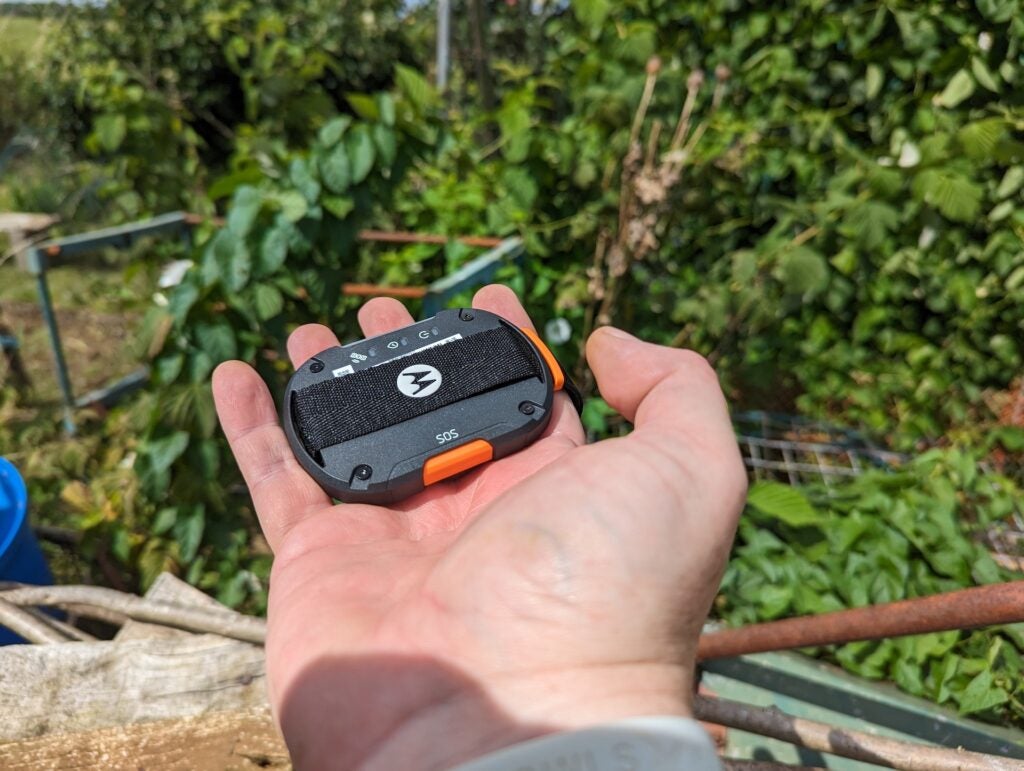
But then, having activated the service plan that would allow me to use the Defy, the Bullitt app consistently claimed the device we were trying to connect over Bluetooth was unknown, not configured for satellite services, and that I needed to activate a plan. It took several rounds of pairing, then forgetting, then pairing again before the Defy would talk to the app properly. It immediately downloaded a firmware update.
Once all that was out of the way, however, the Defy worked flawlessly. Hold the power button and the Defy activates with a short vibration and a beep, your phone will pick it up via Bluetooth, and you can start using it from the Bullitt Satellite Messenger app.
When I reviewed the Cat S75, I found it to be a bit picky about getting a satellite signal, requiring a view of the sky completely uninterrupted by buildings or trees. The Defy requires the same, but seemed more sensitive to the satellite signal, the connection light in the app going green when sat on a window ledge.
It still isn’t going to work in a cave or thick forest, but I had no trouble keeping in contact with the satellite while passing by occasional trees and houses.
In the app, you can send SMS messages to contacts in your phone’s address book, and can send a ‘check in’ message even more easily just by sliding your thumb on the option. It sends a pre-selected snippet of text and your coordinates to your chosen contact, and the message appears in the chat log.
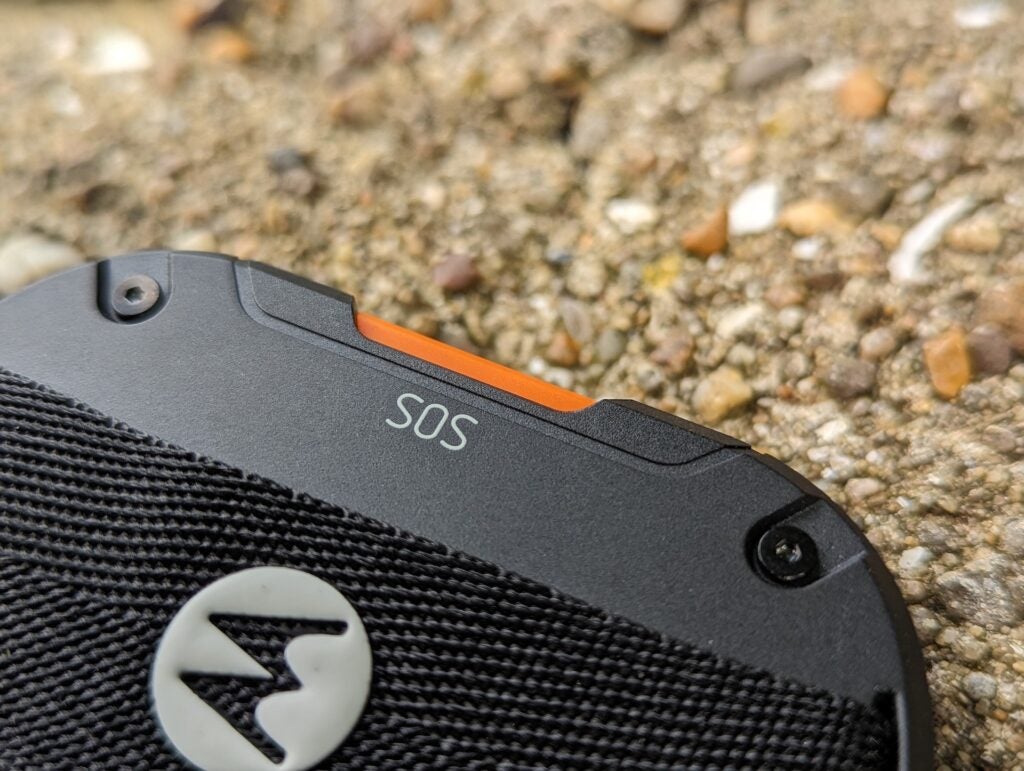
Hit the SOS button or send an SOS message, and you’re put in contact with Bullitt’s own SOS response centre, run by FocusPoint International. You don’t need to have the Defy tethered to your phone to do this, as your GPS coordinates will be sent along with your cry for help. The response centre will then escalate your message to local emergency services, based on your location. If you’re using your phone, you can talk to a responder and give more information.
After half a day’s light use, tethered to a phone the whole time, the battery level in the Defy had dropped by about five percent, so it should have plenty of endurance for week-long hikes. Satellite coverage is available in almost all of Europe and the continental USA at the time of writing, with expansion into Canada, Africa, South America and Australia planned.
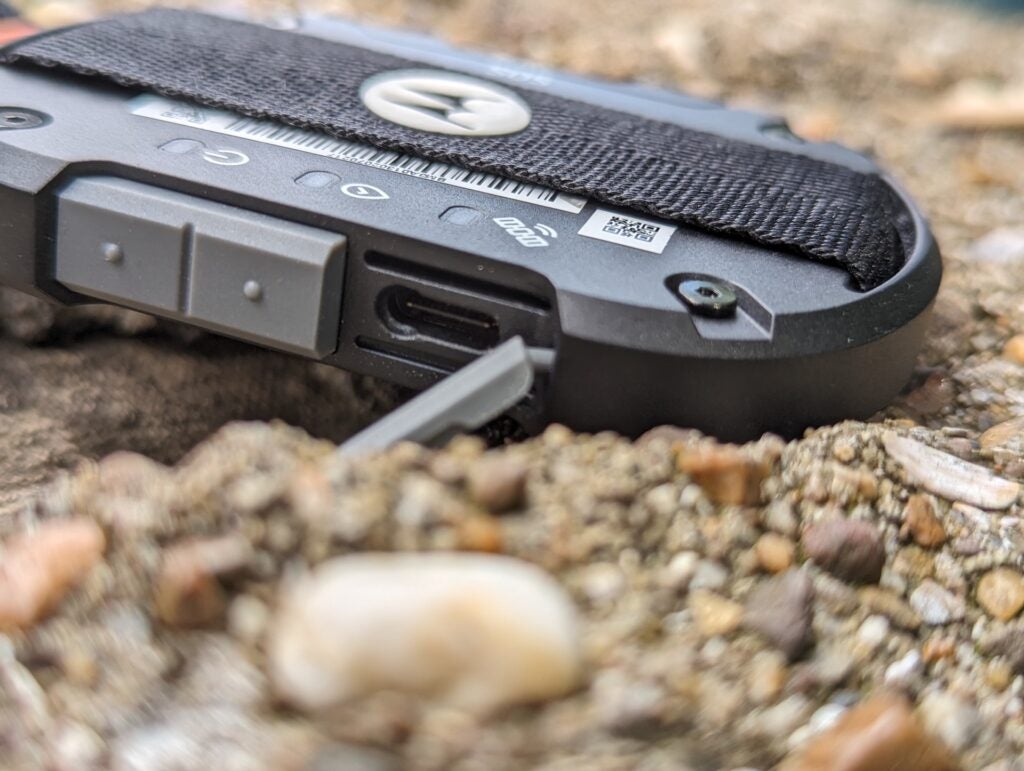
Latest deals
Should you buy it?
If you intend to go away from civilisation: The Defy allows you to keep in touch wherever a normal signal isn’t available.
If your holidays tend to be in populated areas: this is only really necessary for treks outside normal cellular service areas.
Final Thoughts
This may not be something everyone is going to flock to their nearest Motorola store for, but even so, it’s good that it exists.
The satellite messaging service is spreading across the world, and brings communication to places it otherwise wouldn’t be possible to reach.
As long as you can supply it with a clear view of the sky, some battery power and a Bluetooth connection to a smartphone, it will happily exchange text messages with a satellite in geostationary orbit, passing them on to your contacts.
It’s an easy-to-use system, though we found the initial setup a less than smooth process, and it may well save lives.
How we test
We make sure to spend at least a week with each tracker, testing all of the advertised features. We’ll also test the range of the product, and how easy it is to set up.
FAQs
You’ll get a year for free when purchasing the device, but you’ll need to pay £4.99/$4.99 a month after that.
Yes, with a dust and water resistance rating of IP68.
Jargon buster
IP68
The most popular and useful level of water resistance. Usually means a device can withstand dust, dirt and sand and be submerged in 1.5m of water for 30m however this can sometimes vary. Read more in our IP68 guide for more.
Verdict
This light and compact dongle hangs off your backpack and keeps you in contact with the world while you’re off hiking, kayaking or generally exploring in parts of the world not covered by normal mobile phone service. Using satellites, it allows you to send and receive text messages, call emergency services, and send GPS coordinates. It’s a bit of a specialist tool, and won’t appeal to everyone, but for those who do need it, the Defy could be a lifesaver.
Pros
- Good connectivity
- Lightweight
- Water resistant
Cons
- Specialised
- Initial setup was tricky
Introduction
Satellite-based communications that work even when you’re out of cell tower range could be the next big thing in smartphones.
The iPhone 14 gained the capability to send SOS signals this way, and The Cat S75 rugged Android phone can do it too. Now, Motorola has released the Defy, a USB-C dongle that adds the functionality – useful if you’re heading off the beaten track – to just about any phone.
Design and build
- Tough
- Lightweight
- Easy to carry
It’s not much to look at, but then this is a device made to be used rather than admired.

It’s made from chunky black plastic with orange accents and grey covers over its USB-C charging port and other buttons, and has a wraparound strap that ends in a metal loop that can be attached to a carabiner or otherwise hung on your backpack or belt.
Satellite communications depend on a clear view of the sky, so it’s good to see the design take this into account – it’s not something you’ll want to put in your pocket or zip into a bag.
There are three LEDs on the top of the Defy, one for power, one for GPS, and one for a messaging satellite connection. Most of the time they’re off unless they’re trying to tell you something, though the power light pulses to tell you it’s switched on.

On the other side, there’s an orange SOS button for emergencies, with a line of braille underneath it identifying its use for the visually impaired, and the matching letters ‘SOS’ on the other.
Not especially small but nice and light, the Defy is IP68 rated for dust and waterproofing so it won’t object too much to being caught in the rain. It’s also drop-resistant, so if it parts company with your pack strap, it shouldn’t matter too much.
Features and performance
- Good satellite connectivity
- App works well
- Tricky to set up
The Defy pairs with your smartphone via Bluetooth, interfacing with the Bullitt Satellite Messenger app also used on the Cat S75, and available for phones running version 10 of Android or later, or iOS 14 or later.
You’ll need to create an account and activate a service plan before you can start sending satellite messages, though the Defy comes with one year of ‘essential’ coverage which grants you up to 30 messages per month and will cost £4.99/$4.99 per month once the bundled year has run out.
I had trouble signing up for the service, with a phone number and password that worked on the phone browser refusing to let me in when I typed into the app or a PC browser window. Eventually, after constant error messages saying the credentials I’d just set up and verified through an SMS code were invalid, and having gone through at least one password reset, I got logged in.

But then, having activated the service plan that would allow me to use the Defy, the Bullitt app consistently claimed the device we were trying to connect over Bluetooth was unknown, not configured for satellite services, and that I needed to activate a plan. It took several rounds of pairing, then forgetting, then pairing again before the Defy would talk to the app properly. It immediately downloaded a firmware update.
Once all that was out of the way, however, the Defy worked flawlessly. Hold the power button and the Defy activates with a short vibration and a beep, your phone will pick it up via Bluetooth, and you can start using it from the Bullitt Satellite Messenger app.
When I reviewed the Cat S75, I found it to be a bit picky about getting a satellite signal, requiring a view of the sky completely uninterrupted by buildings or trees. The Defy requires the same, but seemed more sensitive to the satellite signal, the connection light in the app going green when sat on a window ledge.
It still isn’t going to work in a cave or thick forest, but I had no trouble keeping in contact with the satellite while passing by occasional trees and houses.
In the app, you can send SMS messages to contacts in your phone’s address book, and can send a ‘check in’ message even more easily just by sliding your thumb on the option. It sends a pre-selected snippet of text and your coordinates to your chosen contact, and the message appears in the chat log.

Hit the SOS button or send an SOS message, and you’re put in contact with Bullitt’s own SOS response centre, run by FocusPoint International. You don’t need to have the Defy tethered to your phone to do this, as your GPS coordinates will be sent along with your cry for help. The response centre will then escalate your message to local emergency services, based on your location. If you’re using your phone, you can talk to a responder and give more information.
After half a day’s light use, tethered to a phone the whole time, the battery level in the Defy had dropped by about five percent, so it should have plenty of endurance for week-long hikes. Satellite coverage is available in almost all of Europe and the continental USA at the time of writing, with expansion into Canada, Africa, South America and Australia planned.

Latest deals
Should you buy it?
If you intend to go away from civilisation: The Defy allows you to keep in touch wherever a normal signal isn’t available.
If your holidays tend to be in populated areas: this is only really necessary for treks outside normal cellular service areas.
Final Thoughts
This may not be something everyone is going to flock to their nearest Motorola store for, but even so, it’s good that it exists.
The satellite messaging service is spreading across the world, and brings communication to places it otherwise wouldn’t be possible to reach.
As long as you can supply it with a clear view of the sky, some battery power and a Bluetooth connection to a smartphone, it will happily exchange text messages with a satellite in geostationary orbit, passing them on to your contacts.
It’s an easy-to-use system, though we found the initial setup a less than smooth process, and it may well save lives.
How we test
We make sure to spend at least a week with each tracker, testing all of the advertised features. We’ll also test the range of the product, and how easy it is to set up.
FAQs
You’ll get a year for free when purchasing the device, but you’ll need to pay £4.99/$4.99 a month after that.
Yes, with a dust and water resistance rating of IP68.
Jargon buster
IP68
The most popular and useful level of water resistance. Usually means a device can withstand dust, dirt and sand and be submerged in 1.5m of water for 30m however this can sometimes vary. Read more in our IP68 guide for more.

























